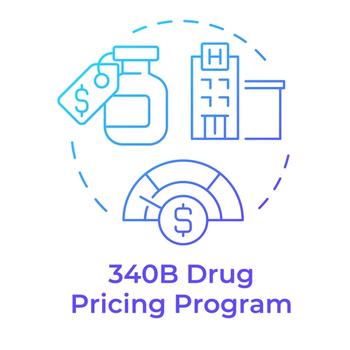
Orladeyo Can Reduce Health Resource Use in HAE
An analysis of claims data shown Orladeyo can reduce hospitals and emergency room visit of patients with the rare genetic condition hereditary angioedema.
Real-world data shows that the use of Orladeyo (berotralstat) by patients with hereditary angioedema results in less healthcare resource utilization, according to a new poster presented at the recent Professional Society for Health Economics and Outcomes Research (ISPOR) meeting in Atlanta.
Hereditary angioedema (HAE) is a rare genetic condition that is potentially life-threatening. People with HAE have a low level of the protein C1-INH that results in swelling of skin and some organs including stomach, intestines and bladder. It can also lead to selling of the larynx and tongue.
Developed by BioCryst Pharmaceuticals, Orladeyo was approved in December 2020 to treat hereditary angioedema in patients 12 years of age and older. It is a once-daily oral inhibitor of plasma kallikrein, which is involved in inflammation, blood coagulation, pain and vasodilation.
Orladeyo has a
In 2023, Orladeyo
BioCryst conducted a retrospective real-world study that analyzed administrative claims data of U.S. patients with HAE from 2015 to 2022. The analysis focused on 260 patients who initiated treatment with Orladeyo between December 2020 and December 2022 and who were enrolled in commercial and public health plans for at least six months.
The analysis focused on inpatient all-cause hospitalization and emergency room visits and angioedema-related hospitalizations and emergency visits. The analysis focused on two groups: 126 patients who had a history of being treated with HAE long-term prophylaxis and 67 patients who were naïve to long-term prophylaxis but had a history of receiving on-demand treatment. The median follow-up duration was 13 months for the overall study population.
The analysis found reductions in healthcare resource utilization in the overall study population following initiation of Orladeyo, including a 34% reduction in all-cause hospitalizations and 14% reduction in outpatient or emergency room visits. Angioedema-related hospitalizations were reduced by 52% and outpatient or emergency room visits related to angioedema were reduced by 44%.
Both groups of patients experienced reductions in emergency room visits and hospitalizations.
“We continue to showcase the value of Orladeyo with each new real-world study we conduct. Here, we build on previously reported real-world outcomes that have shown patients who are treated with our oral, once-daily prophylactic treatment for HAE can maintain – and improve – control of their disease regardless of various baseline characteristics, including prior prophylaxis,” William Sheridan, MB BS, chief development officer and interim chief medical officer of BioCryst, said in a
In February 2024, BioCryst released a
These analyses found that treatment with Orladeyo resulted in sustained reductions in attack rates through 18 months of treatment regardless of the severity of their disease, their history of prior prophylaxis or their C1-inhibitor (C1-INH) level and function. The data are being presented in five posters at the 2024 American Academy of Allergy, Asthma & Immunology (AAAAI) annual meeting.
Newsletter
Get the latest industry news, event updates, and more from Managed healthcare Executive.




















































